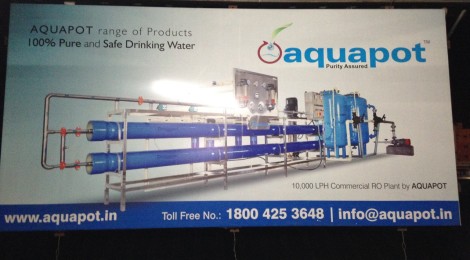
Awash In Assumptions: Drinking Water In Rural India
I love water: drinking it; irrigating clover and timothy with my mom; helping Nordstrom use it wisely. I assume all who grow up in arid climates have something of this adoration for aqua pura.
It’s a special thrill then, when planning our trip, that Alison suggests we spend time with her Byrraju Foundation colleagues in Andhra Pradesh. “One of their big programs is to help the rural villages secure pure drinking water. We’ll learn a lot.”
My spouse is often right.
My first twenty-four hours of learning involved putting dynamite to a half-dozen or so assumptions I carried into the gig. Shall we all peer into my darkness and the light that followed?
“I know what a rural village is.” ‘Village’ is a squishy term in India. Our base of operations is Bhimavaram, as ‘village’ of 250,000 people. How can it rate the v-word? Its significance arises only from agriculture and it hardly ever appears on paper maps. The smallest ‘village’ we visit with our Byrraju Foundation colleagues is ~5,000 souls. The scale of ‘rural’ water production is essentially municipal (a finer take on that point later).
“Available volume is surely an issue.” Dry climate people like me are certain that in a hot place like India, scarcity is the dominant concern. Not yet. Not in Andhra Pradesh, anyway. Here the land is flat and heavily cultivated: rice, aquaculture, coconut palms and sugar cane all grow in abundance. Wide, lazy irrigating canals carry water from the Godavari River for miles and miles. It’s lush. There are ponds. A rich fog rises from the earth every morning.
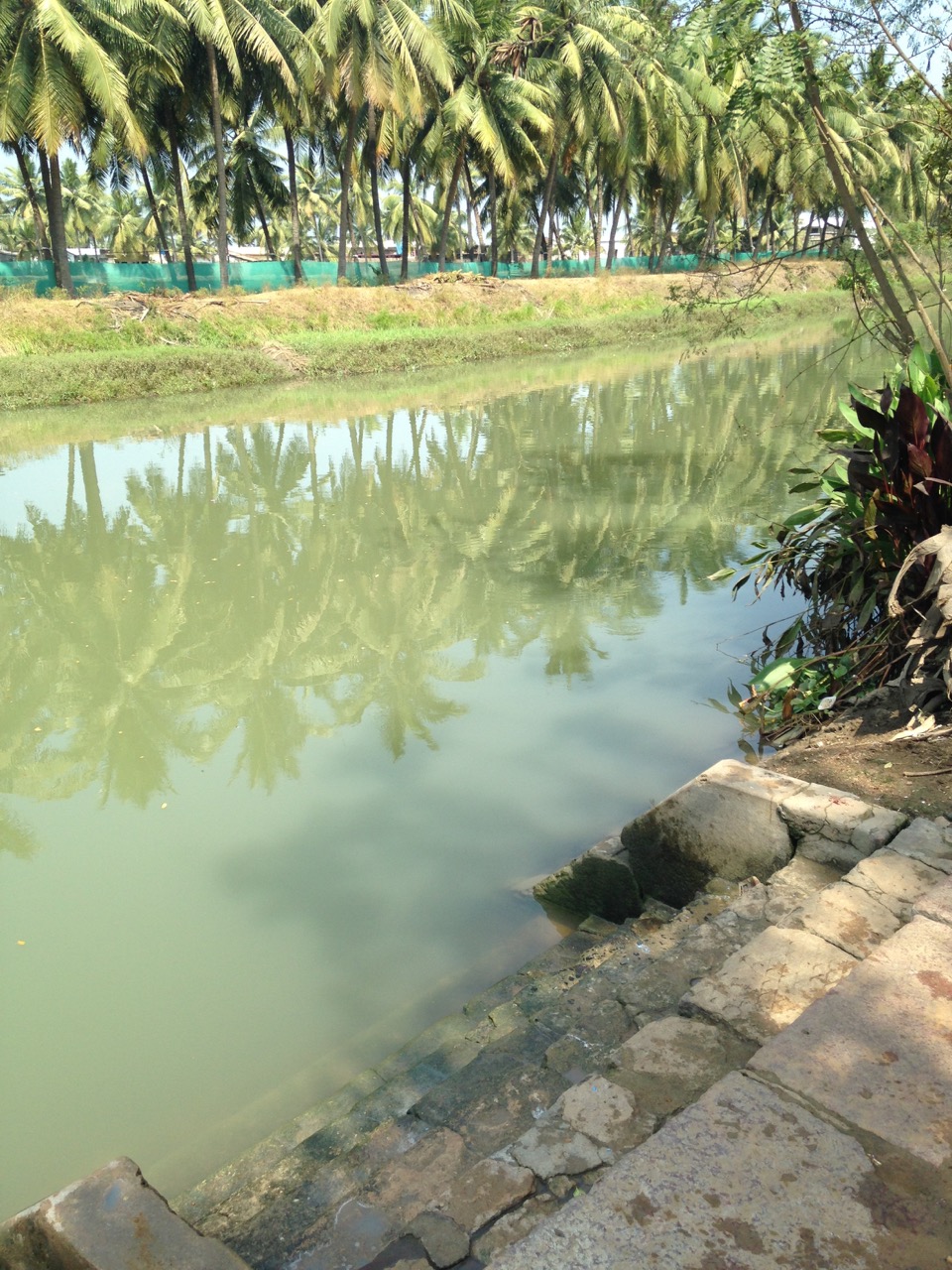
A village bathing ghat near Bhimavaram. The body of water is an irrigation canal. These canals are the source of almost all water in the region, including the drinking water refined by the Byrraju Foundation.
“Purification gear is scarce.” That is my western engineering arrogance writ large. The Byrraju Foundation is running about thirty purification plants in the vicinity of Bhimavaram. Half are chemi-filtration plants and half are reverse osmosis. The thirty operators and three primary water coordinators have no trouble sourcing chemicals or wound-fiber filters or the high-pressure pumps needed for the reverse osmosis membranes. The supply chain works. The competition to supply purification gear is so intense that suppliers are advertising in public. Kacheguda train station in Hyderabad is drowning in full-color posters for civic-sized water purification equipment!
“It’s about production for household use.” How do I use potable water? I drink it, I cook with it, I clean my dishes and clothes and body with it. I water my herbs, vegetables and flowers with it. No one around Bhimavaram seems to suffer this hubris. They produce pure water for drinking. Period. We conducted handfuls of interviews with villagers (Thanks to the Byrraju staff and the students of GVIT for Telegu interpreting!) and nearly everyone discriminated between the water they use for drinking and the water they use for cooking. And of course everyone washes their motorbike and buffalo and clothing down at the local irrigation canal. There is a very positive aspect to this: the Byrraju Foundation need only build purification plants big enough to address the drinking water needs of their village constituents.
“We’re the only game in town.” My preconception was that there would be a source of pure water or there would be obviously rotten water. Around Bhimavaram there is more of a continuum:
- At the more putrid end, people can still drink out of the canals. (Yes, people do. The thinking is something like, “if my cow can drink it, why can’t I?”)
- Somewhat better are the concrete-lined wells near the canals. Installed by the government between 50-60 years ago, the idea is that 30-40 feet of percolation through sand will make the water better to drink than if it came straight out of the canal. And that is true.
- The larger villages have ‘panchayati taps.’ These are municipal water systems, often with a 10-20,000 gallon tank on stilts and piping to every 10-20 homes. What’s the problem? Most of those big storage tanks are open on the top, so birds and monkeys can drop in. The water may be untreated except for the settling it does in the storage tank. The piping is suspect.
- Of course the most healthful choice is water from the water purification systems. Made at a rate matched to village consumption, it is goes through a sedimentation process, it’s de-fluoridated, progressively filtered at least five times, and—depending on the purification strategy—chlorinated or otherwise disinfected.
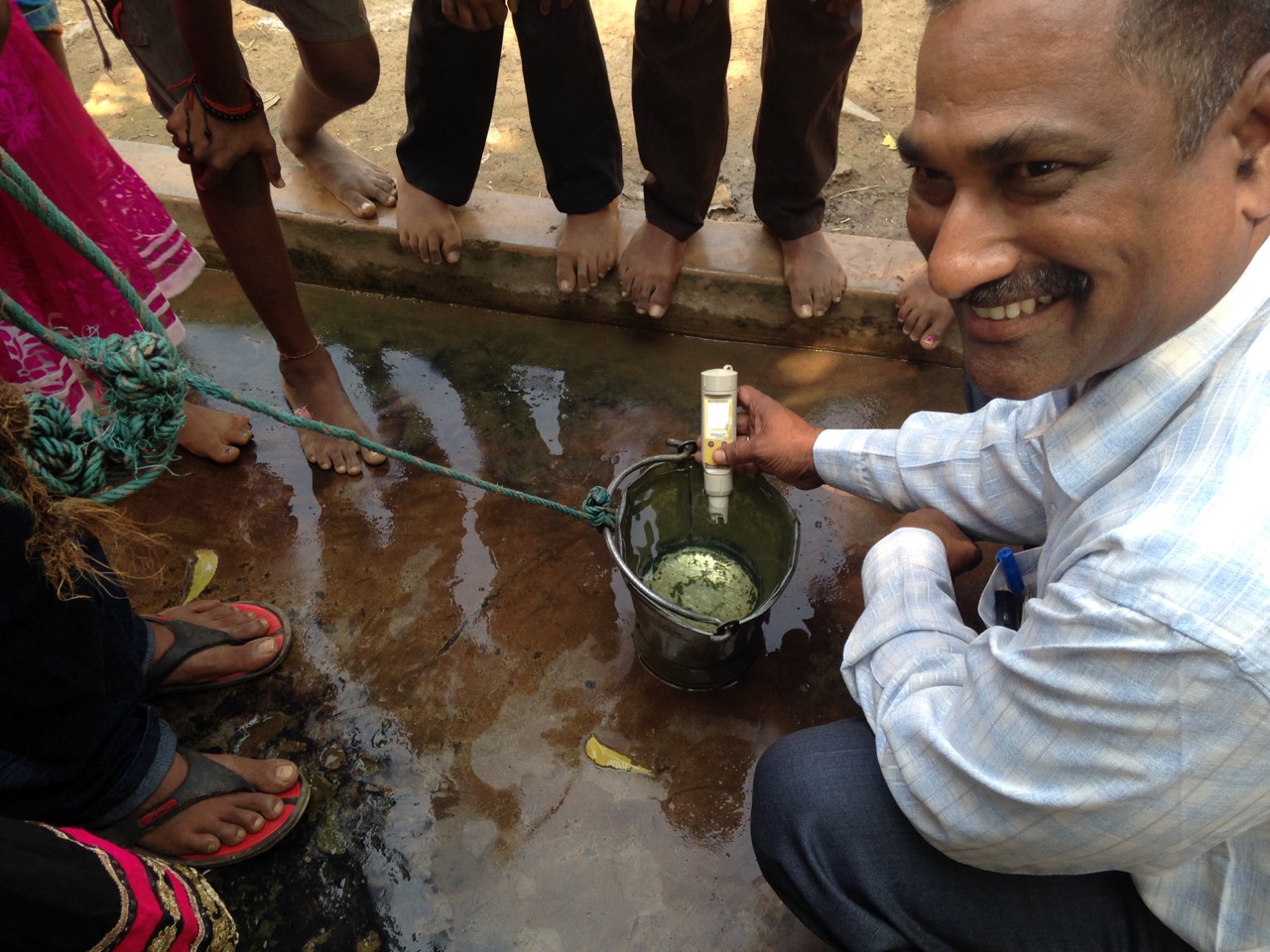
Banumurthy Penumaka, a water coordinator for the Byrraju Foundation, tests the dissolved solids at a bucket well. Off from school because of a local Shiva festival, children flock to the demonstration.
(An interesting side point about de-fluoridation: Andhra Pradesh has geology with a lot of fluorine, and drinking untreated groundwater for a over the long haul will give people skeletal fluorosis, a condition where fluorine deposits in human bone, leading to a painful, brittle skeleton. For this reason all the Byrajju Foundation plants have a treatment step with alum, which reduces fluorine to healthy levels. Alum (That’s Al2(SO4)3•18H2O for the chemically intrigued.) is one of the chemicals that the supply chain is successful in delivering on time and on budget.)
“If we build it, they will come.” In my naiveté, I imagined the entire village visiting the purification plant every day or two. Not only does the number of sources with their spectrum of quality dilute the potential pool of customers for the Byrraju Foundation purification stations, but there is also market competition.
- Purified drinking water—pre-packaged and trucked in—is available in the larger villages and because of the high price (About 1 rupee per liter, or about $0.06 per gallon.) some are sure it must be the most healthful water available.
- If someone your village makes regular trips to a village with a government purification plant, you’ll ask them to bring back drinking water for you, because the government subsidizes its similar-sized, similar-technology purification plants. They sell at below operating costs (There people pay about 1 rupee for 10 liters, or about than $0.006/gallon.).
- Sustainability is the name of the game for the Byrraju Foundation: they charge for water what it costs to produce locally, including the costs of chemicals, filters, operator and coordinator salaries, and long-term equipment costs like pumps and buildings. (For 3 rupees they sell 12 liters of water. That’s about $0.016 per gallon. They set their volume based on a common village-style carrying container.)
Which would you choose?
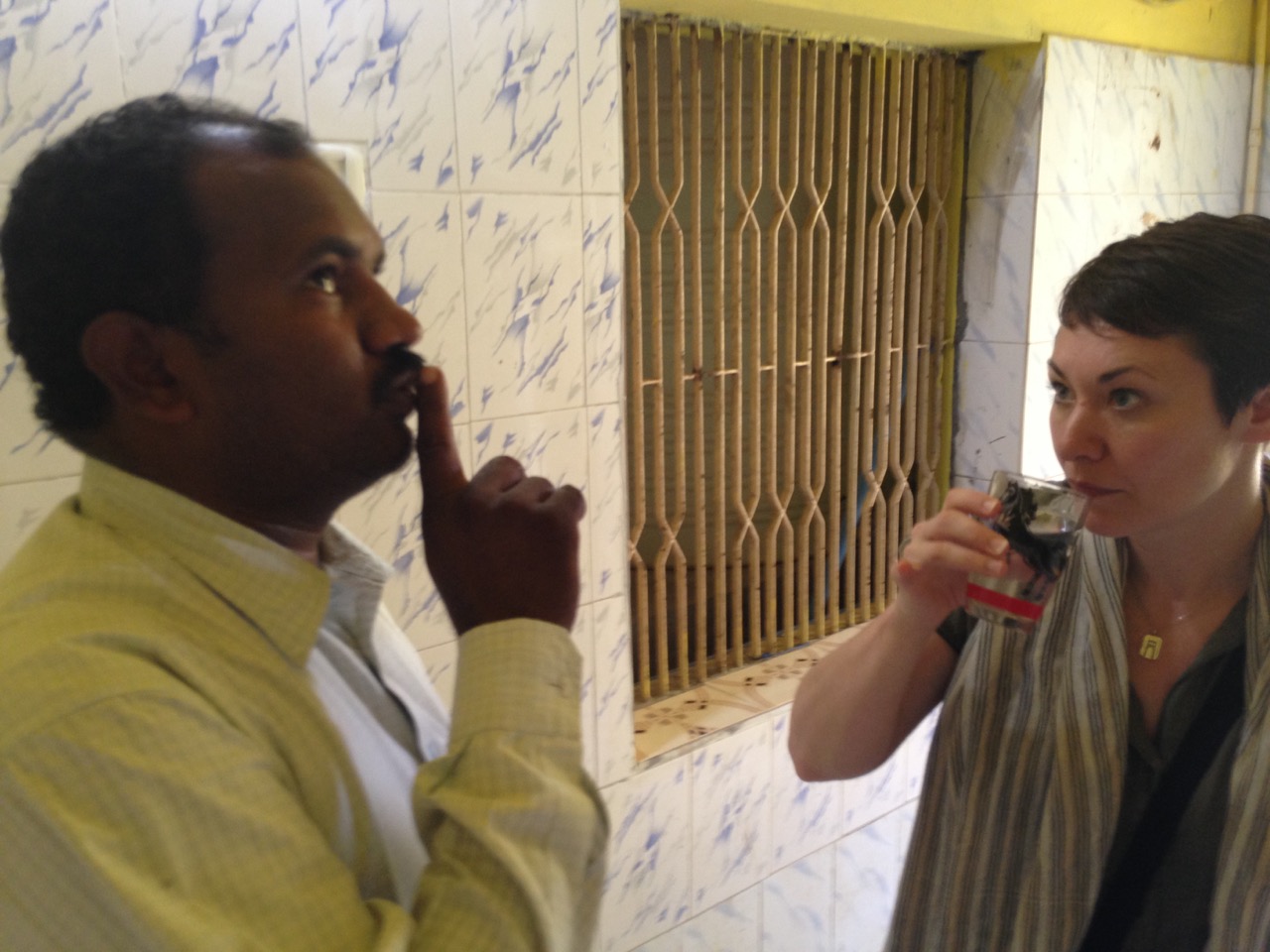
Alison drinks the water in India while water coordinator Padmarao Thangalla considers an answer to one of our questions.
“Everyone wants cleaner water.” Socrato-scientific rationalism falls from its lofty heights and makes a big, ugly crater. I wish it were different, but people who can afford to buy pure drinking water still choose to drink from canals, government bucket wells, and panchayati taps. Sometimes it’s an economic choice, for example the kids’ tuition wins over cleaner drinking water. Sometimes it’s rumor-based: in our interviews we hear that some older people don’t start drinking Byrraju water because once they do, they feel pain in their knees and back. So our consulting efforts find their primary focus: behavior conversion.
There’s crafty work already going, of course. We talk to a cagey, white-haired doctor who also prescribes purified drinking water whenever he prescribes long-term meds for diseases like diabetes and hypertension, which are both rampant in Andhra Pradesh. “I tell them the pills won’t work without pure water,” his grin is rueful.
We will take in the scene with fresh eyes, eyes rinsed clean of their delusions, and make some recommendations for how to move forward.
At the wellspring of clarity,
Chris
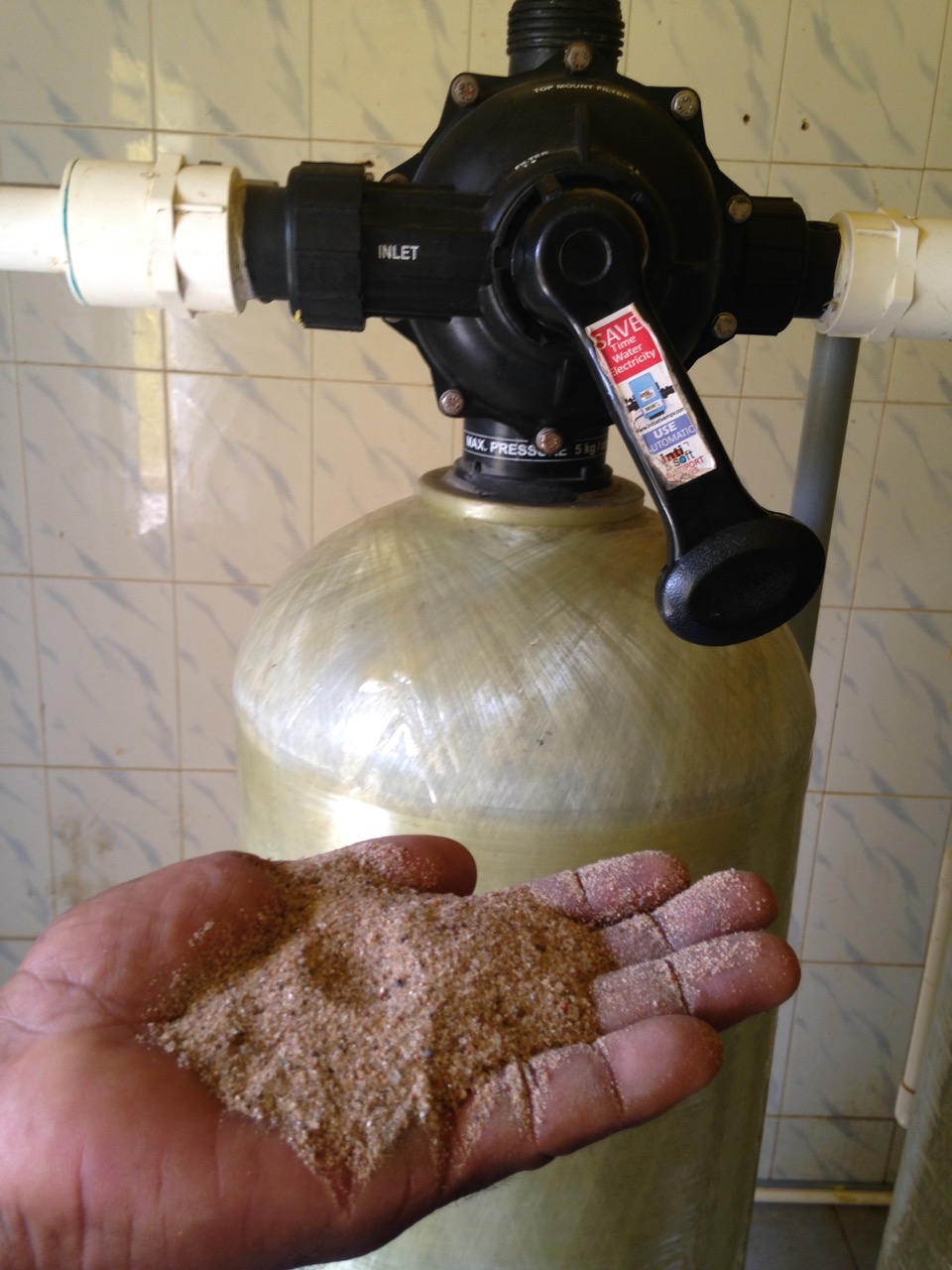
A thorough and informative post. My thanks!
Tony,
You are welcome!
We’re not at liberty to share our recommendations, but at least two of the recommendations seemed to come from a fresh enough perspective to have justified the Byrraju Foundation’s investment in shepherding us around Bhimavaram for a week.
Thirsty for effectiveness,
Chris